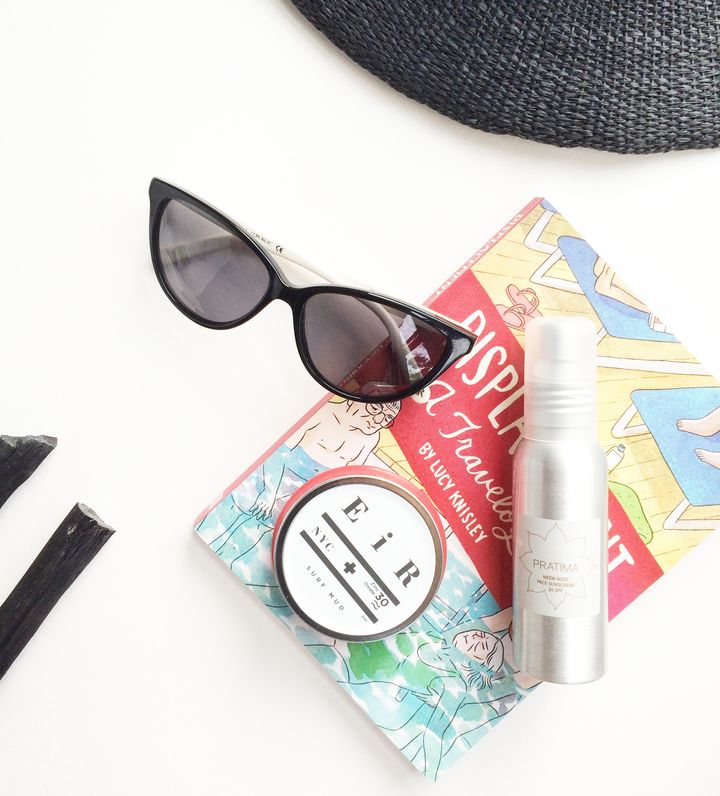
To say that I’m paranoid about sun exposure is an understatement.
Since my early 20’s I’ve applied sunscreen daily. I’ve never been tan and when lounging poolside, my skin is typically white from layers of sunscreen.
My strategy was always to look pasty and white in my 20’s, and fabulous at 40.
As I approach that milestone, I realize my strategy was flawed.
You see conventional (chemical) sunscreens have a mixed record of protecting from rays that age the skin (UVA).
In fact, about half of all US beach and sport sunscreens could not be sold in Europe because they contain inadequate UVA protection, the Environmental Working Group estimates based on products in its database.
And if you’re planning on cutting back on sunscreen use now that summer is nearing an end, think again. UVA rays that age the skin and cause premature wrinkles are present with equal intensity during all daylight hours throughout the year. And can penetrate glass and clouds.
The good news is, as a clean beauty junkie, I’ve found non-toxic, mineral sunscreens so luxurious, they’ve replaced my daily moisturizer.
More importantly, they also protect against UVA rays that age and UVB rays that burn the skin.
This was not an easy task as most clean, non-toxic sunscreens really miss the mark. They leave behind a white residue, or tend to be thick and gluggy.
But after searching high and low, I’ve found clean face sunscreens that are silky, lightweight and completely sheer.
In fact, I like them so much I even wear them under makeup in the evening.
Head to The Bare Essential for my three favorite clean, non-toxic face sunscreens that are as luxurious as your best face serum, absorb beautifully and are perfect for daily use.
Or check out EWG’s easy to use, interactive guide, which rates more than 750 sunscreens based on safety and efficacy.
I also want to touch on why chemical sunscreens are a bad idea.
Oxybenzone is the most popular (and toxic) ingredient in chemical sunscreens, listed as an ingredient in 70% of sunscreens tested by the Environmental Working Group (EWG). It is an endocrine disruptor which mimics estrogen, has been found to alter sperm count in animals and has been detected in more than 96% of Americans.
Mineral sunscreens, on the other hand, physically block UVA and UVB by sitting on top of the skin. Look for mineral sunscreens that contain zinc oxide, which is very safe, better at deflecting UVA rays and if you have sensitive skin, it helps to calm irritation (it’s a key ingredient in diaper rash creams). Also, from the moment it’s applied, you’re protected. No 15 minute wait before you hop in the pool.
Katja Buhrer is a clean beauty and wellness writer in Brooklyn, New York City. Sign up for her free weekly wellness tips via her website.
